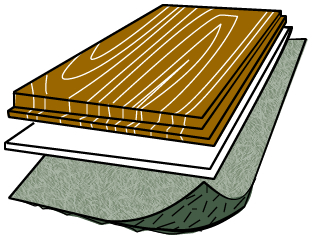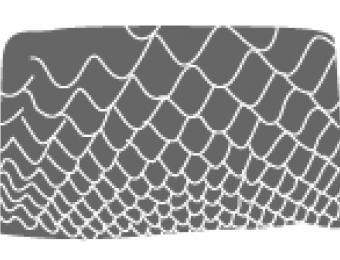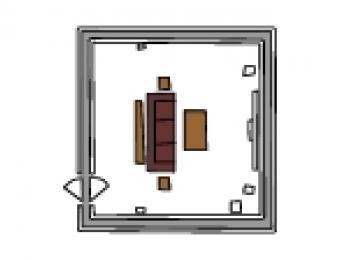
What are acoustic underlays?
Acoustic underlays are materials designed to sit beneath floor coverings to dampen sounds that would otherwise carry through the floor. Made of various materials including polyester matting and recycled rubber (and often coming as a composite material), they absorb footfall noise and vibrations that would otherwise run unchecked through the floor.
Acoustic underlays often incorporate multiple layers and thicknesses, and are designed to block different types of noise. For example, an acoustic underlay may have a layer of polyester matting as a sound absorber sandwiched between two layers of rubber sheeting, which dampens vibrations.
Acoustic underlays often have additional benefits too - like increasing your floor’s thermal insulation and providing a softer surface to lay a floor covering on, making your floor more comfortable to walk on.
How effective are acoustic underlays?
Acoustic underlays are able to prevent a good amount of sound from passing through floors, but may require increased thicknesses to be truly effective. They are particularly good for dampening footfall and other vibrational noise from passing between floors, which is especially important for multi-level dwellings and subdivided properties.
Specialist acoustic underlays can decrease the amount of sound that travels between floors by around 13db-25db, which exceeds the BCA requirements.
How are acoustic underlays installed?
These layers are installed before the floor covering is added, whether it's carpet, tiles, floorboards or a floating floor. The underlay is rolled out and glued to the subfloor (usually either a wooden frame or concrete slab) all the way to the edge.
For wooden floors, acoustic underlay may need to be supported by a base of chipboard or plywood, and concrete slabs may require a similar layer over the top of the underlay for additional support.
Relative cost and effectiveness
Since you're likely to need some sort of underlay for things like carpet and floating floor anyway, spending a little extra for specialist soundproofing underlay is generally a good investment. As well as providing the spongy underfoot feel and adding more thermal resistance to your floor, it can be quite useful in getting rid of annoying footfall echo, though how effective it is in doing this will largely depend on your subfloor and what sort of floor covering you're using.
Shortcomings, potential improvements
There are not a lot of options when it comes to inexpensively removing sound from your floor altogether, since vibrations and mechanical sound transmission through the floor can only really be reduced while still maintaining a solid and stable floor. Adding more layers of acoustic underlay is rarely a possibility - it would make the floor too unstable, and raise it too high from the subfloor.





